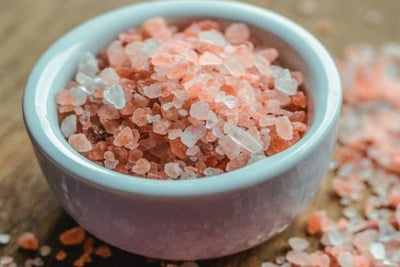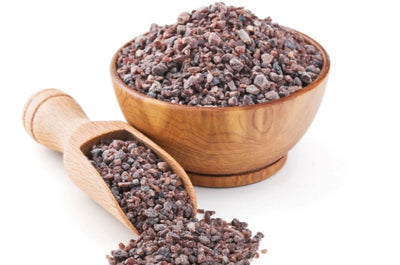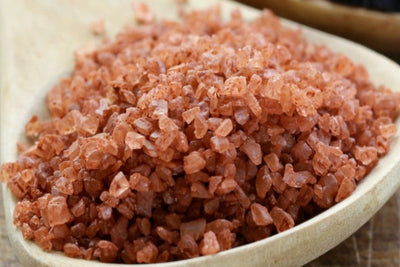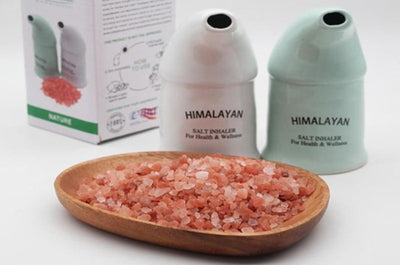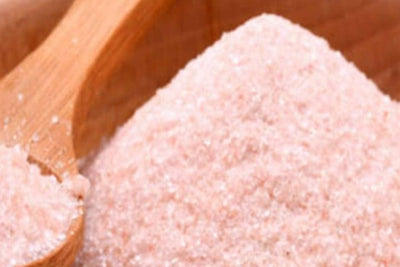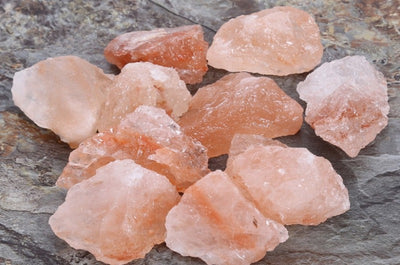Celtic Sea Salt VS Himalayan Salt
Name the most crucial ingredient in cooking. The answer is Salt.
Being an essential part of every cuisine, salt improves not only the flavor. It has certain health benefits that biologically every human body needs.
In recent times, the demand for salt grew, and that is why supermarkets are selling a wide variety of salts. Celtic salt, Himalayan pink salt, regular salt, pink salt, Epsom salt, and what not!
With all the options given, deciding which one to put in the shopping bag is nothing more than a challenge. Indeed, the choice is not that simple as a child’s play!

To make it easier for you, we created this article on Celtic sea salt VS Himalayan salt. Get along to know the health benefits, composition, and specialties before buying the suitable salt for everyday use!
Origin of the Celtic Sea Salt and Himalayan Pink Salt
Most of the salts that the supermarket sells are extracted from seawater remnants from evaporation or directly from seawater.
The Himalayan Pink Salt is slightly different here. It is hand-extracted from the Khewra Salt mines situating at the foothills of the Himalayas at Punjab, Pakistan. The salt mines exist due to massive sea evaporation that took place hundred decades ago.
Celtic Salt, on the other hand, is cultured in Brittany, France. The extraction method goes by a 2000-year-old Celtic Culture technique.
Here, they collect the seawater and extract the salt from the evaporation of the water in salt pans. This salt has high moisture content and bears a light grey color.
How are Celtic Sea Salt and Himalayan Pink Salt different from each other?
- Mineral content
The Himalayan Pink Salt contains 98 percent sodium chloride and natural minerals in the remaining 2 percent. Though in trace amount, the two percent holds 84 organic minerals that are essential to the human body.
Some of the minerals that Himalayan Pink Salt comprises are - Copper, vanadium, aluminum, phosphorus, sulfur, cobalt, boron, molybdenum, and more. Every mineral occurs naturally in the salt. Nothing is extracted or added while refining.

The composition of Celtic Sea Salt is 33 percent sodium with 34 trace minerals, occurring naturally in the salt. However, during the refining process, some minerals are added to improve the health benefits.
- Moisture Content
The moisture content of the Himalayan Pink Salt is pretty low. Nearly 0.026 percent of this pink salt consists of residual moisture.
The Celtic Salt ranks quite high in this context, with 13 percent Moisture Content. It gathers all the moisture during the extraction process.
- Appearance & Taste
The Himalayan Pink Salt is quite popular over the internet for its beautiful pink color with subtle tangy hues. It gets the identifiable shade from the rich iron content in the salt.
Workers extract the Himalayan Pink Salt quite carefully so that nothing from the salt is harmed. Hence, the Himalayan Pink Salt is one of the purest salts worldwide.
Celtic Salt appears to be grey with purple tinges somewhere. It is high in Magnesium from where it acquired the distinctive color.
The Pink Salt has a dominating mineral note on your taste buds, while the Grey Salt has a briny taste due to its origin from brine water.
- Health Benefits
Himalayan Pink Salt is packed with health benefits, but Celtic Salt is not lagging behind either in the competition.
The Himalayan Pink Salt is also called a miracle salt for its health benefits. It is free from chemicals, additives, and loaded with minerals that fuel the biological functions of the body.
Some of its health benefits include goiter prevention, bone strengthening, better blood circulation, balanced blood pressure, improvement in hormonal function, and electrolytic balance.
The Himalayan Pink Salt is a strong source of antioxidants that improves hair and skin health from the cellular level.
Celtic Salt is popular as a ‘Healer Salt’ because it maintains mineral balance in the human body. Therefore, if the Himalayan Pink Salt adds the minerals, Celtic Salt is a pro in balancing them at a cellular level.

Some of its health benefits of Celtic Salt include a better immune system; wound healing, heart health, stable blood pressure, less water retention, and balancing acidic levels.
Does Celtic Sea Salt have electrolytes?
Celtic Salt contains all of the six central electrolytes: phosphate, sodium, chloride, potassium, magnesium, and sulfate. They charge your body battery when included in your diet.
Celtic Sea Salt is used in electrolytic powders for its rich content of electrolytes.
Is Celtic sea salt better than Himalayan pink salt?
Physiologically, our body is composed of 60 percent water, and blood is composed of 90 percent water itself. Celtic Salt in that case will be a better option to choose.
However, which Salt you want to include in your diet, is entirely your call. The mineral content of the Himalayan Pink Salt makes it a smarter option to go by.
In other words, neither of the two salts is a bad choice. If you are sensitive to minerals, avoid the Himalayan Pink Salt and go for Celtic Salt. If you want to have a moisture-rich salt in your diet, choose Celtic Salt.
Both the salts have their own benefits that our body needs.
What is so special about Celtic sea salt?
Celtic Sea Salt is known as the ‘Healer Salt’ as it heals the body from the inside. This grey salt also is quite beneficial to balance the mineral content in your body, physiologically.
Besides that, it also eliminates mucous from the body, clearing lungs, congestion, and nasal cavity. If you face Sinusitis issues, Celtic Salt is a great pick.
The Final Verdict
Now that you know the differences, health benefits, composition, appearance, and everything else about Himalayan Pink Salt and Celtic Sea Salt, we hope you choose what goes best for you.
At the end of the day, these are only Salts that add flavor to your cuisine, benefitting the body with their composition.
You can always choose the one that fascinates you.

